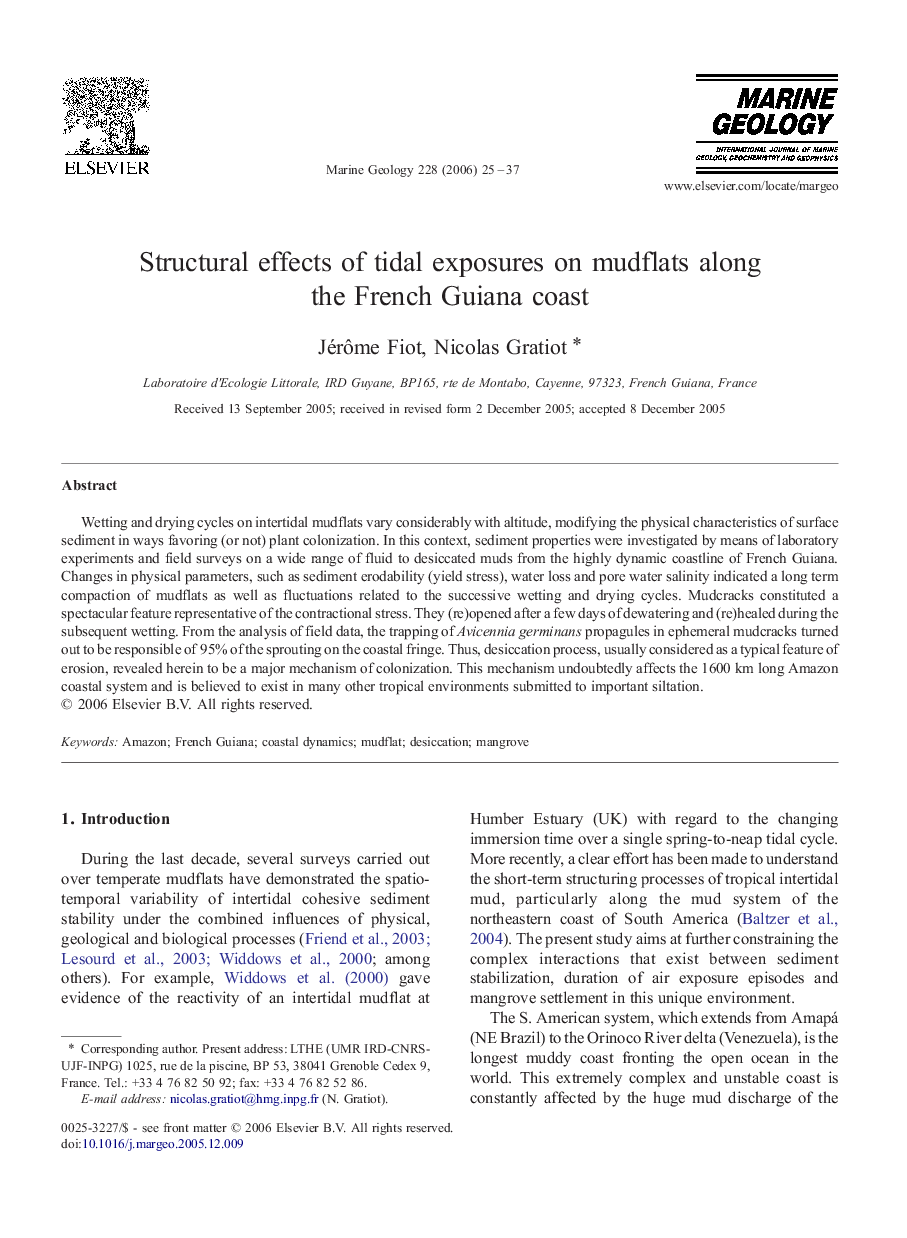| Article ID | Journal | Published Year | Pages | File Type |
|---|---|---|---|---|
| 4719762 | Marine Geology | 2006 | 13 Pages |
Wetting and drying cycles on intertidal mudflats vary considerably with altitude, modifying the physical characteristics of surface sediment in ways favoring (or not) plant colonization. In this context, sediment properties were investigated by means of laboratory experiments and field surveys on a wide range of fluid to desiccated muds from the highly dynamic coastline of French Guiana. Changes in physical parameters, such as sediment erodability (yield stress), water loss and pore water salinity indicated a long term compaction of mudflats as well as fluctuations related to the successive wetting and drying cycles. Mudcracks constituted a spectacular feature representative of the contractional stress. They (re)opened after a few days of dewatering and (re)healed during the subsequent wetting. From the analysis of field data, the trapping of Avicennia germinans propagules in ephemeral mudcracks turned out to be responsible of 95% of the sprouting on the coastal fringe. Thus, desiccation process, usually considered as a typical feature of erosion, revealed herein to be a major mechanism of colonization. This mechanism undoubtedly affects the 1600 km long Amazon coastal system and is believed to exist in many other tropical environments submitted to important siltation.
